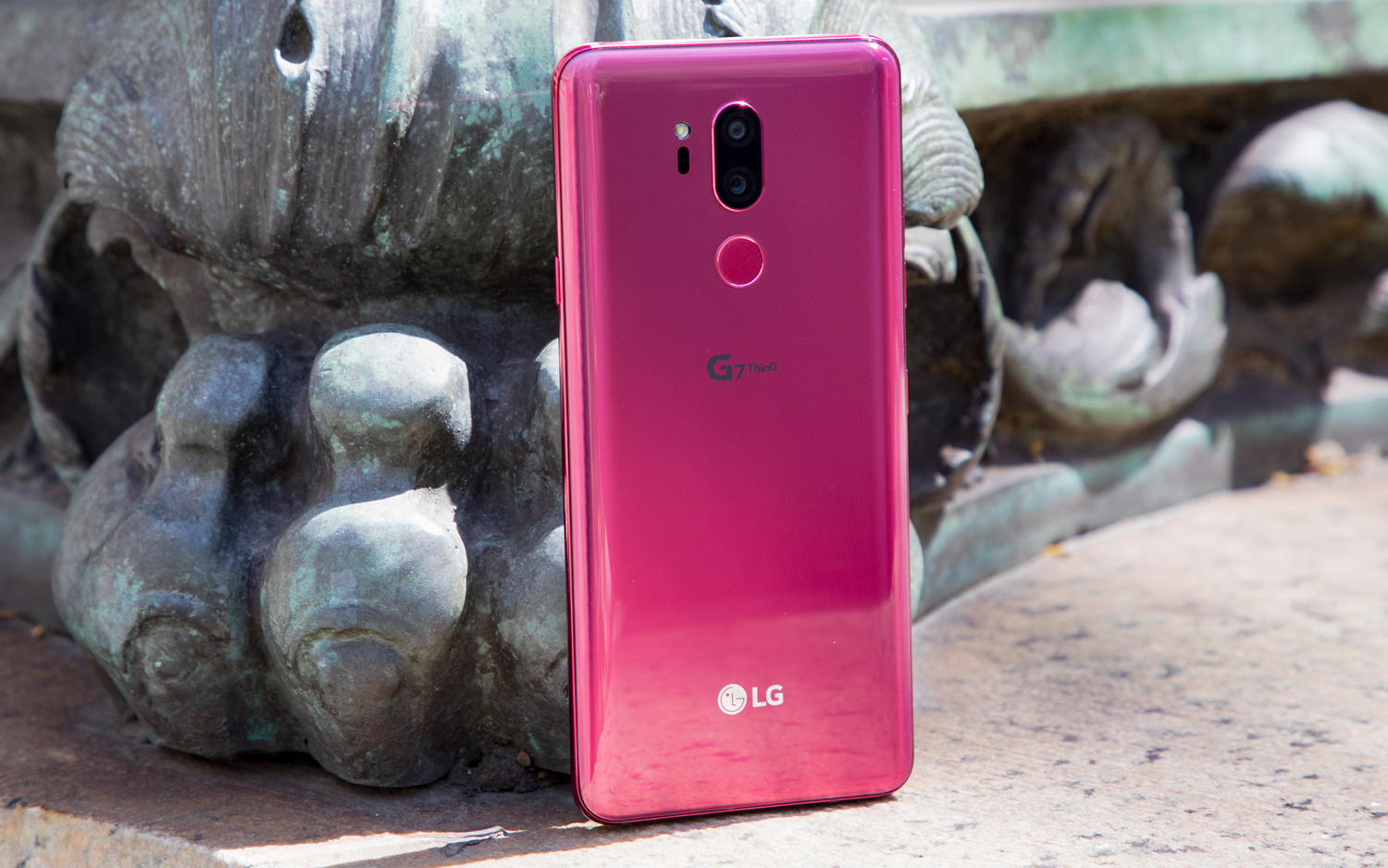It’s Time for LG to Stop Making Phones
LG's ThinQ flagships are ambitious but no match for Apple and Samsung.
LG's G8 ThinQ went on sale April 11, and while it seems like a stellar smartphone on paper, its premium qualities are sabotaged by gimmicks like vein recognition and difficult-to-use hand-gesture controls.

That doesn't mean people won't buy the G8, especially because retailers such as Best Buy have slashed the list price of $820 by almost $200 at launch. But the G8's middling reviews (and those launch-day discounts) should signal to LG that it's time for the company to reevaluate its smartphone strategy — or maybe stop making Android flagships altogether.
It's a tough time to make smartphones
LG's smartphone woes go beyond the critical reception for the G8. Customers aren't buying what the company's selling, either, at least when it comes to phones. LG's mobile division is weighing down the rest of its business. In the fourth quarter of 2018, the company reported a loss of $72.5 million (or 80.7 billion Korean won). LG's smartphone business contributed mightily to the company’s plummeting revenue, losing more than $700 million in 2018. LG’s appliance and TV businesses are still strong, but its mobile division can’t lose money forever.
"I do think that the pressure to differentiate is pushing LG to add features more to be different than really to deliver value to the user — tech for tech's sake." — Carolina Milanesi, Creative Strategies
LG isn't the only company struggling to sell phones these days. Overall sales slumped in 2018 for the first time, according to IDC. In January this year, Apple had to revise its Q1 guidance downward when it became clear that the company was selling fewer iPhones than expected. Samsung continues to dominate on smartphone sales but also reported a soft reception to 2018's Galaxy S9.

But LG's rivals have a clear strategy for making their phones more appealing. Apple is focused on services, announcing plans in March to create original content for its Apple TV Plus streaming service, make Apple Music more competitive with Spotify and curate an expanded News Plus app. Samsung is focused on building unique hardware, making hole-punch displays for the Galaxy S10 lineup and flexible screens for the bendy Galaxy Fold. (Although Samsung’s rush to revolutionize smartphone hardware might sink the Fold.)
LG is taking a different — and so far, less successful — approach to bolstering its smartphone sales.
Get instant access to breaking news, the hottest reviews, great deals and helpful tips.
Gimmicky features not good enough
LG's mobile division is nothing if not creative. The company's G5, out in 2016, was a modular smartphone with swappable parts. Last spring's G7 ThinQ emphasized artificially intelligent photos and a superloud speaker. The V40 ThinQ launched last fall with a triple-lens camera array. The new G8 ThinQ uses a depth-sensing front-facing camera to scan the veins in your palms; this action unlocks the phone and can detect your hand gestures (and respond accordingly).

All of those features sound useful and amazing. In reality, they fall apart. Instead of working on useful services or innovative hardware, LG continues to fall back on gimmicky features that fail to delight in real life.
"I do think that the pressure to differentiate is pushing LG to add features more to be different than really to deliver value to the user — tech for tech's sake," said Carolina Milanesi, an analyst with Creative Strategies.
"The gimmicky strategy was one that was better-suited for a different era of smartphones."— Tuong Nguyen, Gartner
The G8 ThinQ offers Hand ID, which can be used instead of the device's fingerprint sensor and facial recognition, to unlock your phone. Air Motion allows you to interact with the G8 without touching it. But neither of those features makes it easier to use the G8. Features that people actually want, like longer battery life and excellent portrait mode, elude the G8.
MORE: Best Smartphones - Here Are the 10 Best Phones Available
"The gimmicky strategy was one that was better-suited for a different era of smartphones," said Gartner analyst Tuong Nguyen. "We've gotten to the point now [that] I would argue is more smartphone than we can handle. There are features and functionality that most of us will never touch upon.

"That's why you either have to do it the best and show you're the leader, or you have to create an ecosystem of value for your customers, similar to what Apple did with their services announcement," Nguyen continued. "What [LG is] offering was nice at some point in time, but maybe not so competitive now."
Prices are too high
Then, there's the fact that LG sells its flagship G- and V-series smartphones at or near the same prices as Samsung and Apple products. LG offered the G8 for $820 at launch (though retailers quickly lowered that price), which is about what you'd pay for a Galaxy S10 ($899) and iPhone XS ($999).
"My recommendation [to LG] would be to change the value proposition from the outset and sell it as a discounted flagship and compete with OnePlus." — Avi Greengart, Techsponential
Even Apple and Samsung are struggling to sell smartphones that cost more than $900, as carrier subsidies have ended and people are hanging onto their old phones for longer than two years. LG's phones don't have the same cachet, so they can't command the same high prices.
"LG does move sales volumes, particularly in the U.S., when these phones are discounted — either with buy-one-get-one [deals], which carriers frequently do, or when the price drops after a few months," said Techsponential lead analyst Avi Greengart. "My recommendation [to LG] would be to change the value proposition from the outset and sell it as a discounted flagship and compete with OnePlus. Instead of launching at a flagship price and then dropping when it doesn't sell, why not just plan to sell it at that price and market it that way and reap the benefits?"
MORE: 10 Best Android Phones
Other smartphone makers produce powerful flagship phones for less than $600. But LG’s discounts appeal to buyers who think they're getting a deal on a name-brand phone, because they're not familiar with brands like OnePlus, which makes the blazing-fast $549 OnePlus 6T.
And brands that are popular in Asia, including Oppo and Vivo, make innovative phones that just aren't available in the States, though they're cheaper than LG's flagships.
"As a U.S. consumer, I don't know some of these smaller brands or Asian brands," Nguyen said. "If I told my parents about Xiaomi or Oppo, they wouldn't know it. [They'd say], 'I don't really know anything about phones, and this LG is $200 off. I'll go with that.' [The LG] brand still resonates with consumers."
Outlook
LG isn't going to stop making phones just because it can't outsell Samsung or Apple. There are business implications to consider, namely, that LG makes smartphone components that will always have a built-in buyer: LG itself.
Perhaps LG will take the innovative ideas fueling other parts of its business, such as the rollable display that the company showed off at CES, and port them over to its mobile division. A flexible LG flagship could blow Samsung's Galaxy Fold and Huawei's Mate X out of the water.

But in the meantime, LG is gearing up to expand its phone lineup with the V50 ThinQ 5G, pinning the company's immediate future on being one of the first out of the gate with a smartphone that connects to 5G networks. Not the very first, though — that would be the Galaxy S10 5G — and possibly not the very best, based on our hands-on experience with both phones.
The V50 ThinQ 5G was scheduled to launch in South Korea in late April, but LG delayed the rollout just days beforehand to "concentrate on the completeness" of the phone. Whatever is causing the issue is apparently related to the V50's 5G connectivity; LG said it would be working with Qualcomm and South Korea's wireless carriers to improve the V50's service. That doesn't bode well for the device, which is expected to be ready by May to launch on Sprint's 5G network in the U.S.
But 5G connectivity won't differentiate the V50 ThinQ from other phones. 5G networks are rough around the edges in our testing and will be for some time. LG is also not competing on price; the V50 will start at 1.19 million won, or $1,060. To compare, the S10 5G is 1.39 million won, or $1,226. The V50 is slightly cheaper than the S10, but it's not a budget device by any means.
But the phone could be a strong seller, especially if LG or its carrier partners slash the price before it goes on sale in U.S. And so the cycle continues.
Credit: Tom's Guide
Caitlin is a Senior editor for Gizmodo. She has also worked on Tom's Guide, Macworld, PCWorld and the Las Vegas Review-Journal. When she's not testing out the latest devices, you can find her running around the streets of Los Angeles, putting in morning miles or searching for the best tacos.
